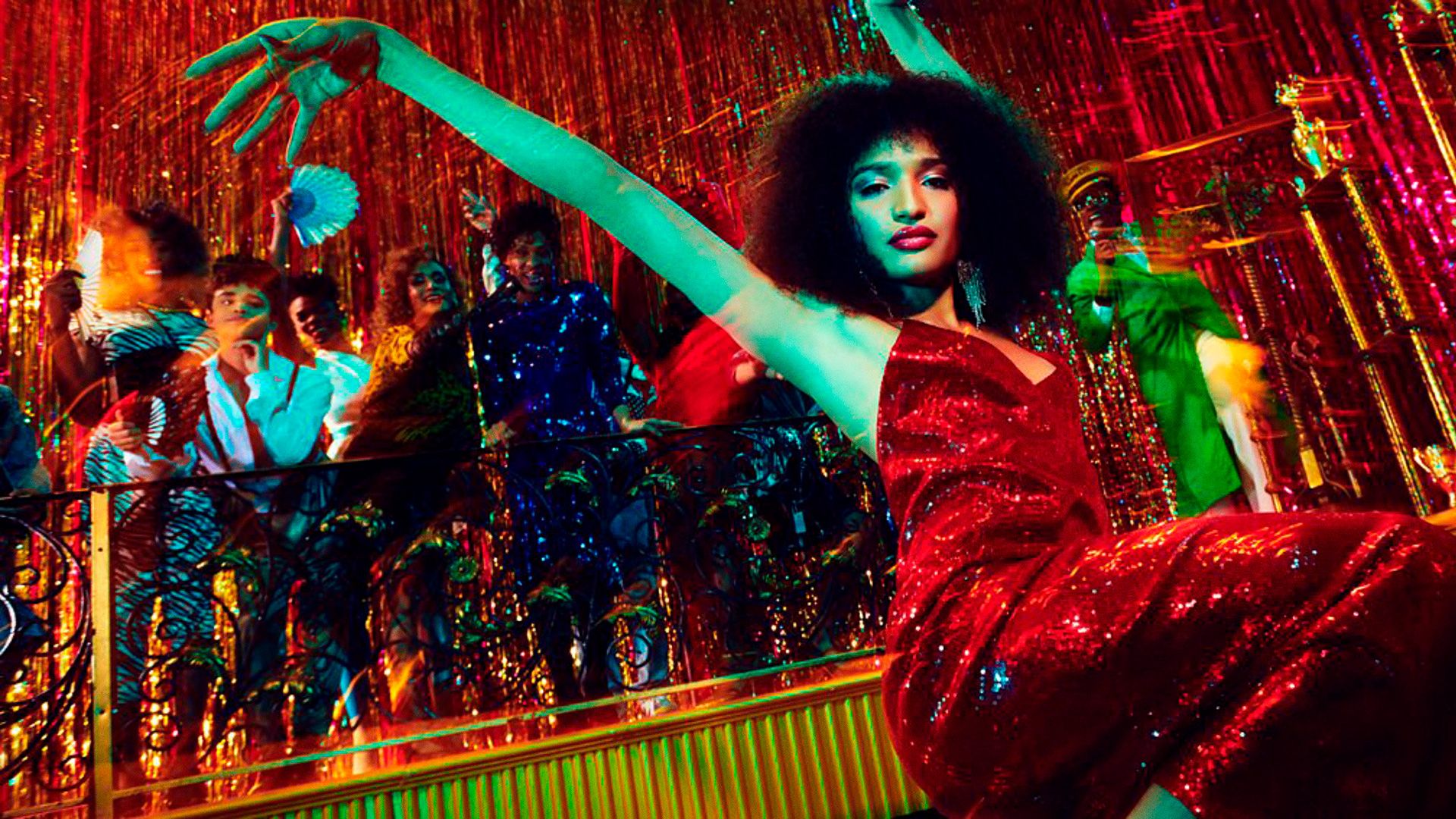-
From New York to Paris, Voguing and Waacking Get People On Their Feet

Voguing originated on New York's famous ballroom scene, during balls in which performers and dancers would imitate poses they'd seen in fashion spreads. Waacking, on the other hand, emerged from Los Angeles' gay clubs and was inspired by the stars of Hollywood's golden era. The two styles became popular in Black and Latinx LGBTQI+ communities in the 60s and 70s. Both offered a space for free expression and personal liberty in marginalized communities that had to cope with layered forms of socio-political and economic domination and discrimination. Concerned with freeing the body and affirming the self, waacking and voguing developed sub-culturally and gave initiates a chance to escape an often-hostile outside world, providing a space where people could dance, reinvent themselves, and be exactly who they wanted to be. Through movement, imitation, and a good dose of humor, voguing and waacking offered ways of reclaiming oneself and one's freedom.
Tools of empowerment
According to Tiphaine Bressin and Jeremy Patinier in their work "Strike a Pose," the first voguing ball took place in 1962 in New York. There, participants parodied beauty pageants with their postures and gestures, all the while taking cues from the fashion world to create costumes that became ever more over-the-top. With parody and imitation as the names of this game, the competitors notably took inspiration from 1960s issues of Vogue magazine, eventually creating highly-codified movements. The competition also included different parallel categories meant for imitating associated stereotypes of social success, like businessmen. Wearing such costumes for the space of an evening, voguers appropriated symbols of social distinction — power, fashion, money, luxury — in order to brush up against collective dreams of abundance and contentment. Little by little, a real community emerged around these contests where members from different "houses"— clubs that offered one another mutual aid and solidarity — would mix, forming a kind of second family.
The following decade, in the 1970s, another dance would come onto the scene on the West coast, in bars and clubs frequented by LA's Black and Latinx communities. "Punking" grew to be known as "waacking," a word that originally was used as an insult against the community of dancers that used it, and which was rapidly re-appropriated in a perfect example of de-stigmatization. "The re-use of this term emerged from a shared desire to make of it a new identity," explains dancer and activist Habibitch. Punking is a choreographed gesture inspired from the Hollywood divas of the 1920s: dancers move their arms in brusquely rapid, dramatic poses — rapid-fire imitations of the divas of yore. "It is also inspired by Latin, African and jazz styles. Waacking, far from being mainstream, melds with disco music and thus is ideal for the Black gay community where it originated," Habibitch continues. "The club where you waack reveals itself as a space of exchange, resistance and resilience, even if it isn't necessarily conscious or literal at the time."
Growing popularity
For choreographer, performer, and researcher Geisha Fontaine, "voguing, similar to waacking, sought to take hold of values such as glamor, elegance, and femininity. It came from a desire to affirm equality with more privileged social classes, by authorizing oneself to access that from which one was generally excluded." As time passed, from club to club and scene to scene, the two dances entered the mainstream. In 1990, Madonna's video for "Vogue" was dedicated entirely to the eponymous dance, while Jennie Livingston's lauded 1991 documentary Paris is Burning transported viewers backstage on ballroom culture. There, she went beyond the dressing rooms and illustrated the very real difficulties that members of the scene encountered as soon as they left the catwalk and sequins of New York nightlife. Representations of the ballroom scene, photographed by artists such as Chantal Regnault and Xavier Héraud, have since been exported around the world.
After losing some momentum during the health crises that marked the 90s in the Gay community, the subculture made a roaring comeback in the 2000s and today enjoys resonance in France. "At least a dozen balls are usually organized each year in France and bring together thousands of spectators," explains Matyouz, Godfather of the House of Ladurée, the first house in France. For journalist and activist Didier Lestrade, who was the first to speak openly about the voguing scene in France, "the new generation has really taken hold of ballroom culture and voguing, creating new methods of rewriting history — in the same way that the queer generation appropriated the events at Stonewall."
At the same time, waacking is gaining popularity on an international scale, in part due to the American series "Soul Train." Indeed, it's pushed dancers from around the world to come to the US to participate in workshops and learn the moves, explains Habibitch. In France, the waacking scene is developing thanks to trailblazers such as Bruno Marignan, Sandrine Sainte Croix, and Lil Kiss. Like voguing, it's a discipline that originated in alternative spaces, eventually hitting the mainstream and becoming something of an institution in itself.
Waacking and the ballroom scene developed in contradiction to and along with evolutions in society itself. If today they're still seen as empowering dances, their politics have changed over time. "In France, the waacking scene is a place for exchange and sharing, with a heavy groove. Even if the technique is very recognizable, it's also a very free dance. It's not an activist or politicized scene — at the most, it's a feminist one," says Habibitch. With the advent of the internet and YouTube, the influence that these dances enjoy nevertheless continues to inspire new initiates.